
Photo: janeb13 / Pixabay, Pixabay License
How to Install Firefox on Linux Mint, Ubuntu, Debian or any other Linux distribution
Last updated on July 28, 2024
This how-to explains how to install Firefox on Linux, with or without replacing an existing Firefox installation.
Firefox 128 was officially released on July 09, 2024.
Firefox 129 will be released on August 6, 2024.
More information on Firefox release dates (including beta, nightly and ESR versions) can be found on the official Firefox Release Calendar.
Warning for inexperienced Linux users: stick to the Firefox version included with your Linux distribution! Firefox can be installed or uninstalled through the package management system (aka. Software Center, Software Manager, Synaptic, apt…) of all major distributions. Concerning updates: they will appear automatically in the package manager. It may take a few days for the update to show up, because each Firefox release has to be tested with each distribution.
A. Install Firefox in 5 easy steps
1. Download
Download Firefox from the official Mozilla Firefox page:
www.mozilla.com/firefox/
Download alternative versions (beta, developer edition, nightly) from the official channels page:
www.mozilla.com/firefox/channels/
A 64 bit build is available in the linux-x86_64 directory of Mozilla’s FTP.
This how-to supposes that the downloaded file is saved in the “Downloads” directory located in your home directory.
2. Extract
The downloaded file is a compressed .tar.bz2 archive. In case you want to learn more on these extensions: tar, bzip2. To extract this juicy archive, open the Downloads directory. Look for a file named firefox-128.0.tar.bz2, right-click on it and select “extract here”.
Alternatively, you can extract the archive from the command line:cd ~/Downloads/
tar xjf firefox-128.0.tar.bz2
For those interested, here are the tar arguments used in the command:
x : eXtract
j : deal with bzipped file
f : read from a file (rather than a tape device)
The firefox-128.0.tar.bz2 archive can now be deleted.
3. Move to /opt
External programs like LibreOffice, Google Chrome, Skype, Zoom, … are all installed in the /opt directory. If you want more info about why /opt is the right place to install programs on Linux, check out these two links:
Where to install my products on Linux?
Filesystem Hierarchy Standard
You may need to create /opt first:sudo mkdir /opt
On the contrary, if you already had a previous Firefox version installed in the /opt directory, remove it with the following command:sudo rm -r /opt/firefox
Now move the Firefox directory (which was created in your Downloads folder during extraction) to /opt:sudo mv firefox /opt/firefox128
4. Set up symbolic links
Depending on your usage pattern, follow the instructions for case 1 OR for case 2.
Case 1: you want to use Firefox 128 as your default browser:
“Backup” the old Firefox launcher:sudo mv /usr/bin/firefox /usr/bin/firefox-old
Create a symbolic link pointing to the new Firefox version:sudo ln -s /opt/firefox128/firefox /usr/bin/firefox
There is no need to update your icons/shortcuts; they should now launch the new version of Firefox.
Your old Firefox version is still available. If you want to use it, run firefox-old in a terminal or create shortcuts/icons referring to firefox-old.
Case 2: you want to keep using your “old” Firefox by default:
Create a symbolic link pointing to the new Firefox version:sudo ln -s /opt/firefox128/firefox /usr/bin/firefox128
Launch the newly installed Firefox by running firefox128 in a terminal, or create shortcuts/icons referring to firefox128.
5. Updates
Firefox will manage its own updates independently of your system’s package manager, and download subsequent releases automatically. There will be no need to repeat the whole installation procedure for every new Firefox release… Enjoy Firefox!
B. Firefox PPAs, Beta, Updates, other distributions
1. Be careful with the “ubuntu-mozilla-daily” ppa!
Many howtos on this subject will tell you to install Firefox pre-versions through Mozilla’s ppa ubuntu-mozilla-daily. Using this ppa will not only install the latest Firefox 130 daily build, once called “minefield” – updated daily! It will also update your current Firefox and Thunderbird to test versions.
These testing versions are not meant to be stable or usable.
→ Avoid this ppa unless you know exactly what you’re doing!
2. The official Firefox Beta PPA
The “Official PPA for Firefox Beta” (firefox-next) will replace your current Firefox installation with the current available version in Mozillas Beta channel. Simply run these two commands in a terminal:sudo apt-add-repository ppa:mozillateam/firefox-next
sudo apt-get update && sudo apt-get upgrade
Note: you can use only one of these channels (Beta or Daily) at the same time!
3. Official Ubuntu / Linux Mint updates for Firefox (automatic)
Ubuntu updates its repositories to the newest Firefox version only a few days after the official release – so does Linux Mint. Here are a few examples of how many days Ubuntu and Linux Mint need to push the update:
- Firefox 83 was released by Mozilla on November 17, 2020. Both Ubuntu and Linux Mint made the new release available on November 18, only one days after the official release.
- Firefox 89 was released on June 1st, 2021. Ubuntu and Linux Mint dispatched the update on the same day.
- Firefox 103 was officially released on July 26, 2022. Ubuntu and Linux Mint repositories were updated the same day.
- Firefox 114 came out on June 6, 2023. Linux Mint users were able to update one day later.
- Firefox 121 was released by Mozilla on December 19, 2023. Linux Mint users were asked to update two days later, on December 21.
4. Linux Mint 21.3 “Virginia”, Debian 12.x “Bookworm”, Manjaro Linux, ...
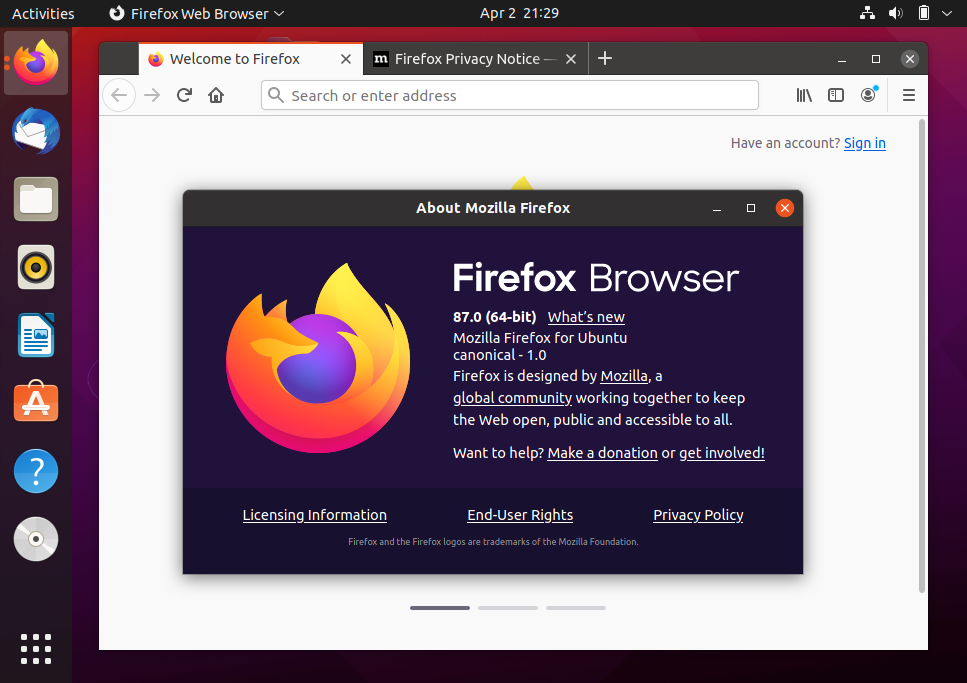
This how-to has been tested with success on the following distributions, starting with Firefox 4 and up to version 128 (and Firefox 129 Beta):
RHEL/Oracle Linux 9.4, 8.10 & 7.9
Debian 10.x “Buster”, 11.x “Bullseye” and 12.x “Bookworm”
Linux Mint 20 / 20.x (support until April 2025)
Linux Mint 21 “Vanessa”, 21.1 “Vera”, 21.2 “Victoria” and 21.3 “Virginia” (support until April 2027 for all 21.x releases)
Linux Mint 22 “Wilma” (supported until June 2029)
Ubuntu 20.04 LTS “Focal Fossa” (support until April 2025)
Ubuntu 22.04 LTS “Jammy Jellyfish” (support until July 2027)
Ubuntu 24.04 LTS “Noble Numbat” (support until May 2029)
Manjaro Linux 22.1 “Talos” and 24.0 “Wynsdey”
This installation procedure is reliable and should work with a wide range of distributions. Please share your experience with MX Linux, Pop!_OS, EndeavourOS, OpenSuse or any other distribution in the comments.
C. Uninstall/remove Firefox (non-ppa installations)
Remove the Firefox directory:sudo rm -r /opt/firefox128
You should also consider changing back or removing symbolic links which pointed to the old Firefox directory. Use this command:sudo mv /usr/bin/firefox-old /usr/bin/firefox
Or remove the firefox128 symlink:sudo rm /usr/bin/firefox128
D. Tips & tricks for Firefox on Linux (or Windows)
Just installed or upgraded Firefox? Here are a few setting you might want to change to get the most out of Firefox.
1. Speed up the mouse wheel scrolling speed
The default mouse wheel scrolling speed in Firefox is fine for Laptops, but on modern computer monitors with a respectable vertical resolution, mouse scrolling feels super-slow. Tweaking the scrolling speed is fast and easy:
- Open a new tab in Firefox, type or paste
about:configin the address bar and press Enter. Click on “Accept the Risk and Continue”. - In the Filter box, type or paste
mousewheel.min_line_scroll_amount - Change the value from 5 (default) to any integer value you like, depending on your screen resolution, mouse, sensitivity, … The value is neither an quantity of text lines nor a number of pixel. A value between 10 and 60 seems to be a good choice. I use
50on a 32″ Monitor with a 2560 × 1440 resolution.

Changes are immediate, you can open another tab or window to test and fine-tune.
Increase the mouse wheel acceleration
On higher resolution displays, increasing min_line_scroll_amount may not be enough. Mouse wheel acceleration, though disabled by default, is extremely useful for scrolling through long documents. Repeat the steps described above, but this time search for mousewheel.acceleration.

mousewheel.acceleration.start: The mouse wheel “click” number at which acceleration begins to take effect. This value determines whether or not acceleration computations are applied to a given scroll event.
Suggested values: 2 (accelerations kicks in really fast) to 5. To me,4is a sweet spot.mousewheel.acceleration.factor: The multiplicative factor used to determine the rate of acceleration. The acceleration computations create a constant acceleration effect, but this value can control the level of acceleration. Default: 10, suggested values: 6 to 16.
There are a few more variables which influence the vertical scrolling speed and can be changed safely, for example:
mousewheel.default.delta_multiplier_ymousewheel.system_scroll_override_on_root_content.vertical.factor
2. Disable the built-in PDF reader in Firefox
The built-in PDF viewer in Firefox has progressed continuously since its introduction in 2013, but I still prefer using the distribution’s document viewer (Evince/Xreader/…). Here is how to disable the built-in PDF viewer or use the system viewer:
- Click the hamburger menu button and choose “Preferences”. Alternatively, enter
about:preferencesin the address bar. - In the General panel, go down to the Applications section.
- Find PDF in the list and change it to the desired value.
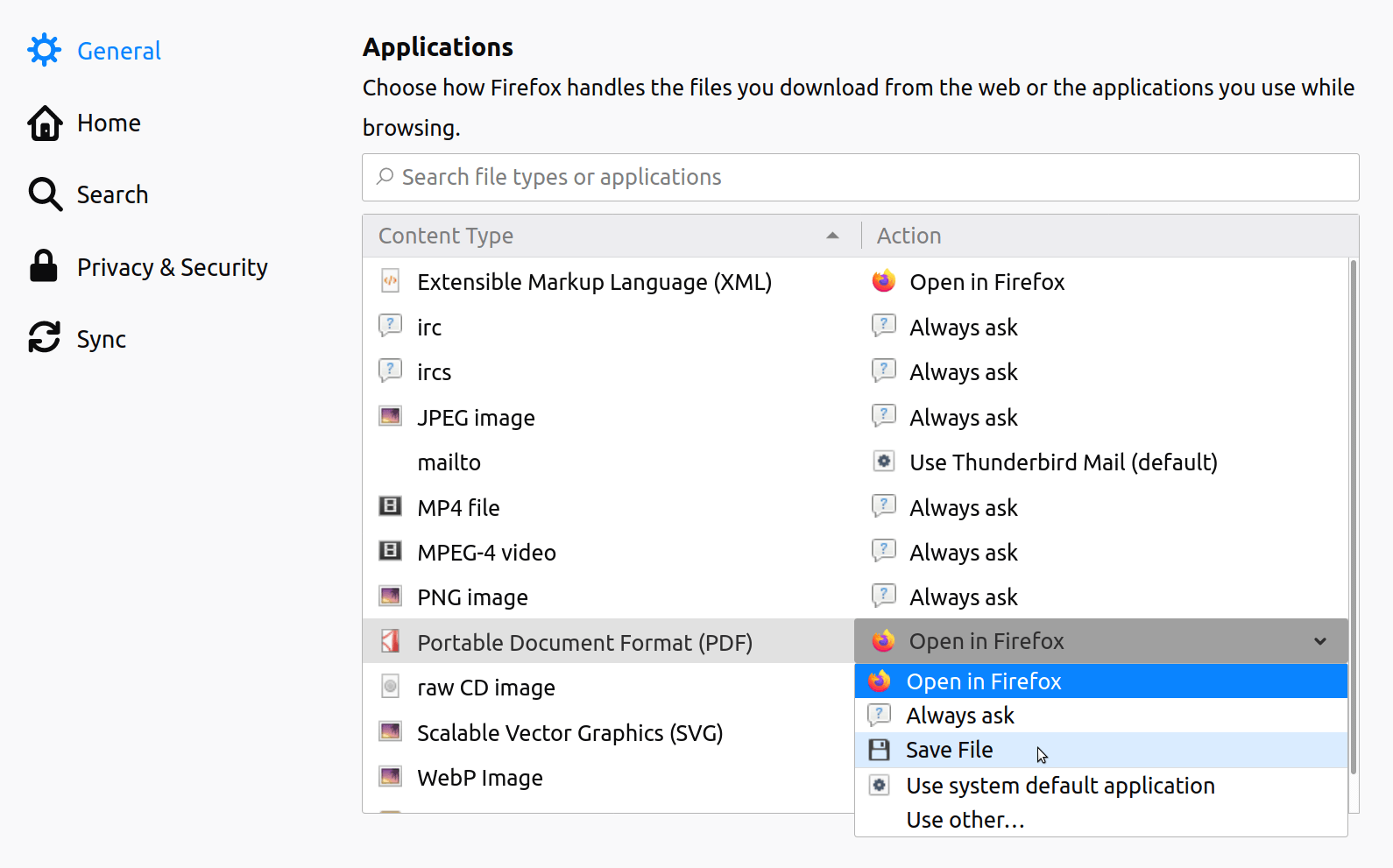
Disable Firefox PDF viewer (pdfjs) completely
If you want to disable the built-in PDF viewer entirely, follow these steps:
- type or paste
about:configin the address bar - search for
pdfjs.disabled - click on the toggle button to turn the value from “false” to “true”.

3. Run multiple Firefox profiles and instances simultaneously
Problem: if you run different Firefox versions with the same profile (profiles are compatible through major versions), Firefox will check the extensions and plugins every time you start a newer or older version.
Solution: create a profile for each Firefox version. Create new profiles with:firefox -no-remote -ProfileManager
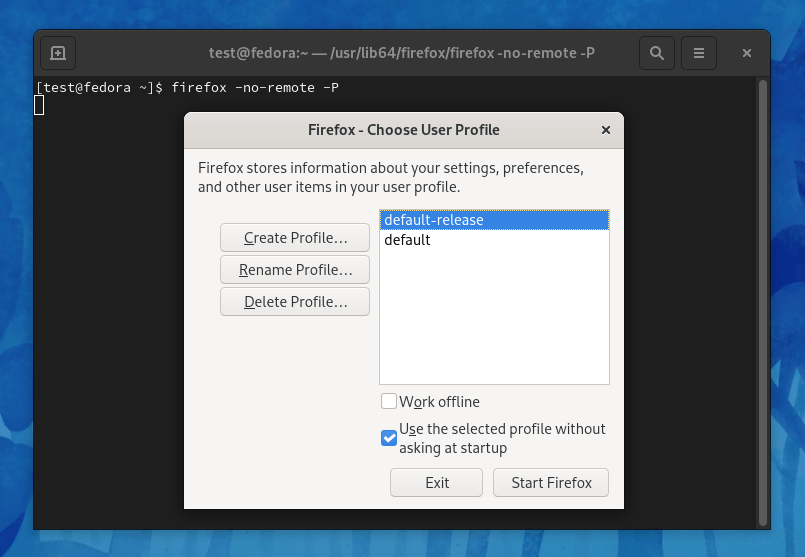
The -no-remote option starts a new instance of Firefox even if there is already a Firefox instance running. Use -no-remote to run Firefox 128 and Firefox 129 (beta) instances at the same time.
Let’s say that you’ve created two profiles: firefox-stable-profile and firefox-beta-profile. You can start one instance of Firefox 128 and one instance of Firefox Beta with the following commands:firefox -no-remote -P firefox-stable-profilefirefox129 -no-remote -P firefox-beta-profile
By Johannes Eva, December 2010 – July 2024
Read also:
How to install LibreOffice 24.2 on Linux Mint, Ubuntu, Xubuntu, Debian…
How to set default programs on Linux Mint or Ubuntu
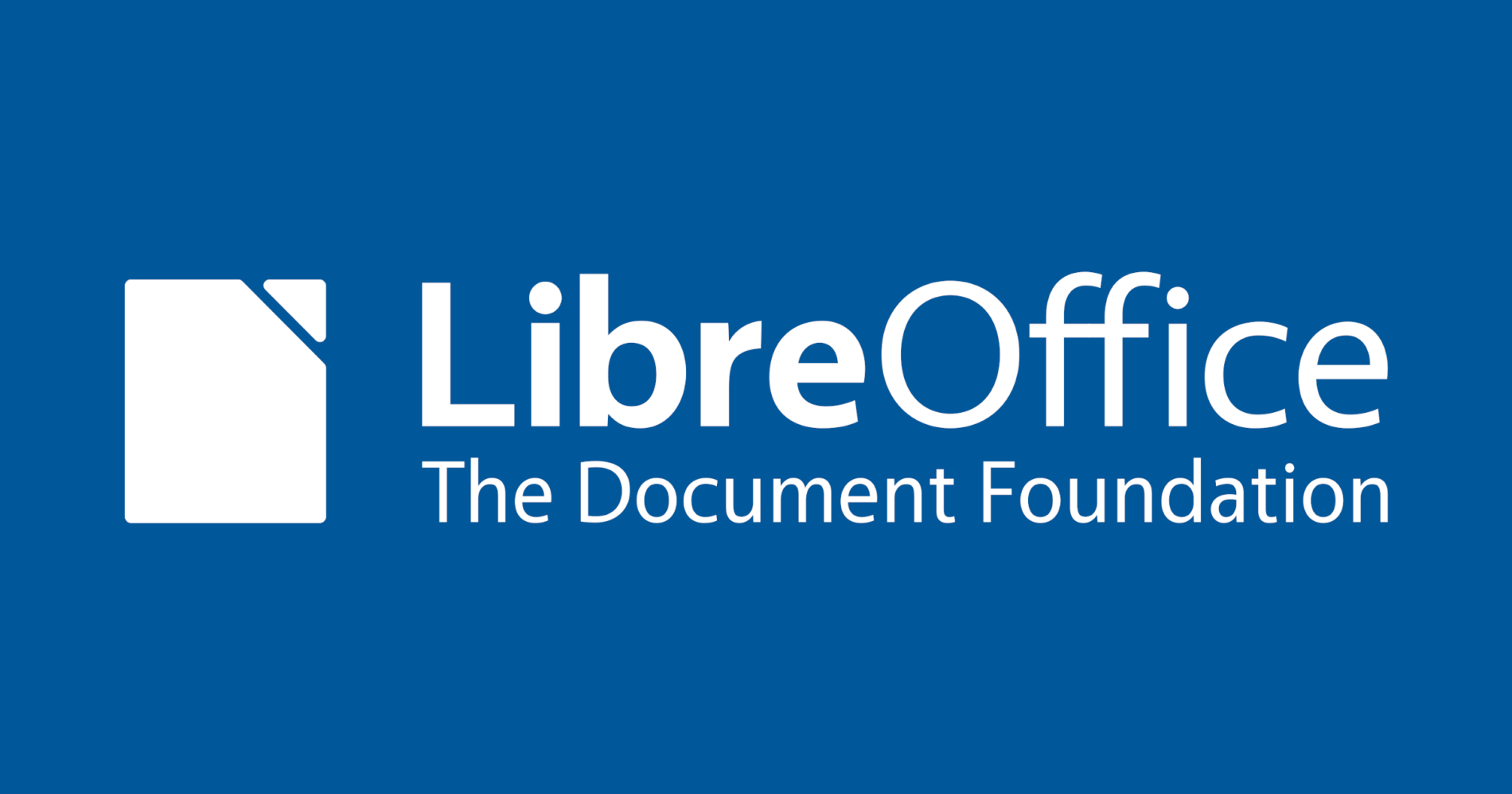





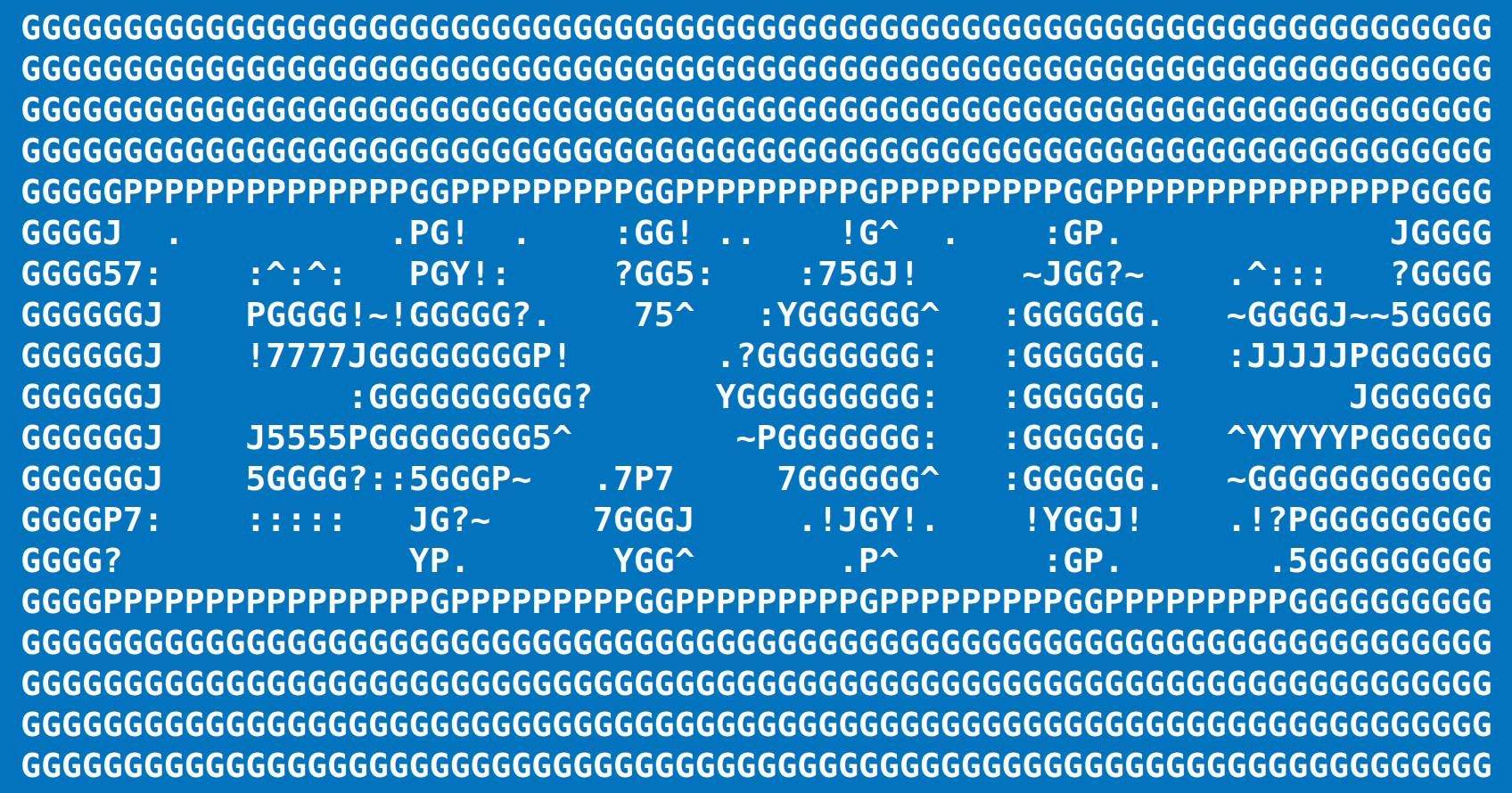

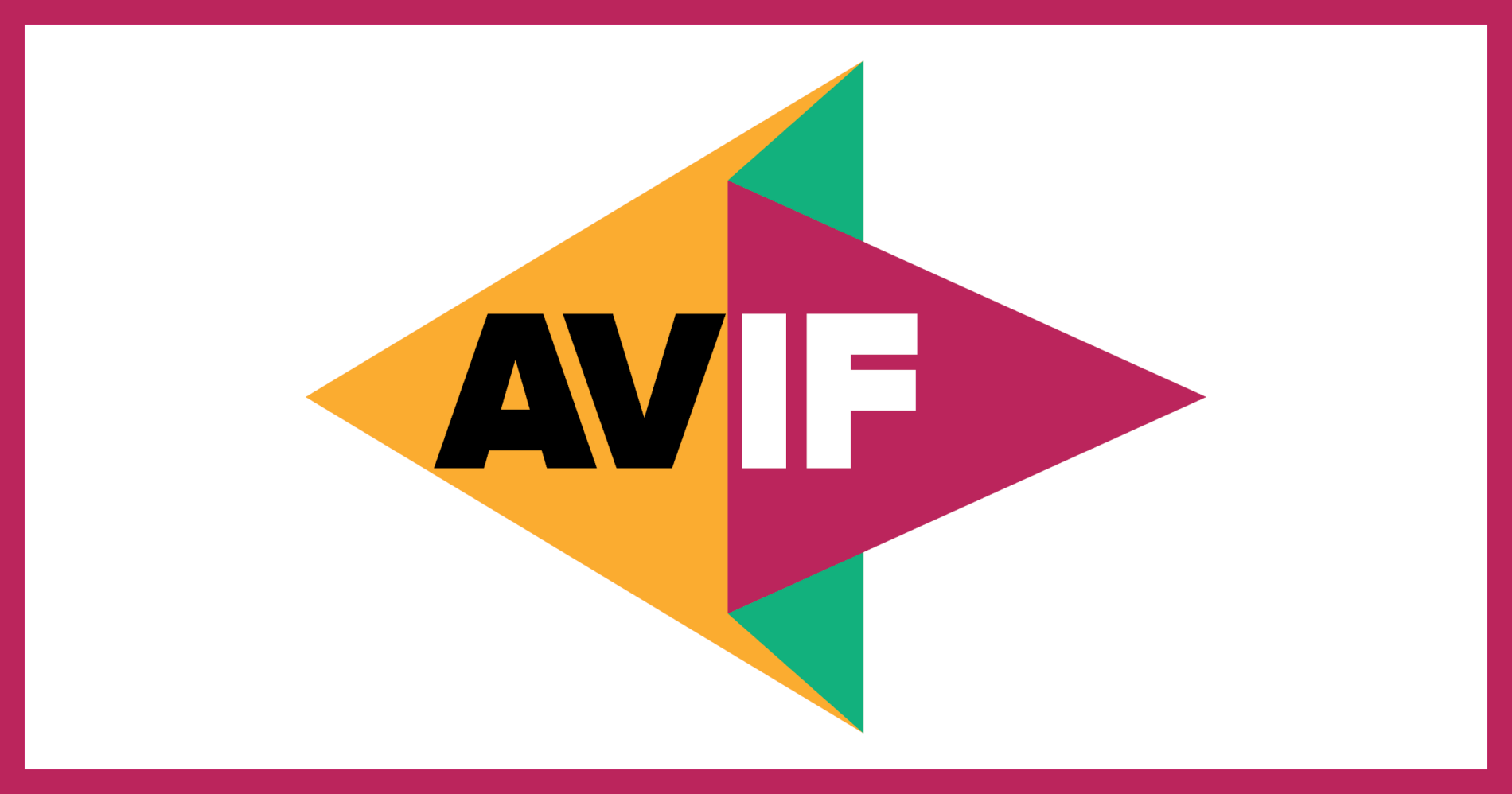



2 thoughts on “How to edit EXIF metadata via the command line with ExifTool”
awesome work! I spent so much time looking for it.
I think you added a small typo when adding the xmpRights, it should be like this:
-XMP-xmpRights:Marked=True
Thanks again!
THANK YOU for this post. i have been wanting to post many CC BY-NC-ND 4.0 INTL images to archive.org and couldn’t find a simple-enough (yet *correct*) how-to. This post enabled me to assemble the full version (i made a bash script) that i needed. Perfect! Many thanks again for taking the time to set this up so clearly/simply and correctly. I even like your use of color and spacing to make finding things quicker for the eye to zoom in to. Well done, indeed.
Comments are closed.